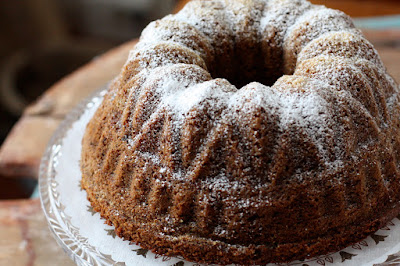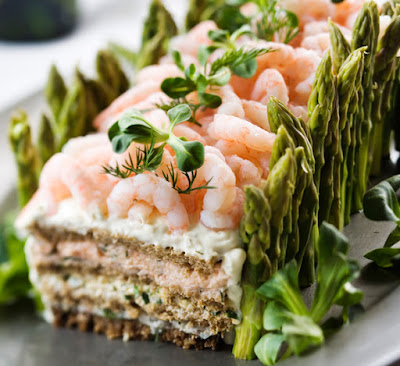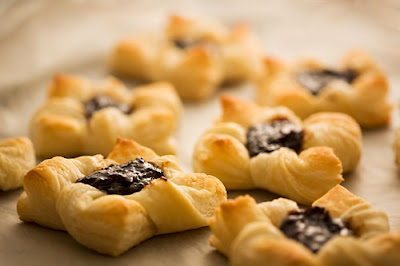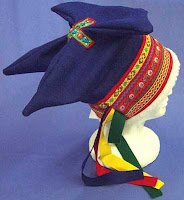Ma, miközben mi magyarok azt ünnepeljük, hogy a Mikulás (jobb esetben) csokival jól megrakta a cipőnket, addig itt a finn függetlenség kikiáltását ünneplik a mai napon. Ennek a rövid története a következő.
Az I. Sándor, orosz cár és Napoleon által megkötött tilsiti békét (1807) követően az Orosz Birodalom Svédország Kontinentális zárlatba (a Nagy-Británniával szembeni akkori embargó) való belépését követelte, Finnország orosz érdekszférába került. Svédország, aki brit szövetséges volt ekkor, ennek ellenálva kénytelen volt erőit megosztani az ezt követő orosz és potenciálisan bekövetkező dán támadások közt. A tilsiti béke lehetővé tette Finnország és Lappföld 1808-as meghódítását az oroszok által, ugyanis a béke értelmében a franciák nem ellenezhették az ország invázióját, így az 1808-1809-ig tartó Finn háború, mely a svédek és az oroszok között zajlott végül svéd vereséggel záródott, melynek eredményeként létrejött a Finn Nagyhercegség, amely egészen 1917-ig az Orosz Birodalom autonóm részeként létezett. Az 1809-es porvoo-i országgyűlésen I. Sándor esküt tett a alkotmány betartására, arra hogy a finnek (akkor tulajdonképpen svédek) saját kormánnyal rendelkezhessenek, megtarthassák az evangélikus vallást, illetve a svéd nyelv státusza is érintetlen maradhatott, míg a finn nyelvrendelet csak 1863-ban született meg. A századvégétől II. Miklós uralkodása alatt egyre erősödött az orosz elnyomás, mely 1910-ben megkísérelte a finn alkotmány megszüntetését is, ami elégedetlenséghez vezetett. A cár elbukását követően tisztázatlanná vált a Nagyhercegség vezetése így az ideiglenes kormány tárgyalásokba kezdett Helsinkivel melyből 1917 nyarán megszületett a Hatalmi törvény, miszerint a finn parlament önmagára ruházta a hatalmat és feloszlatását is csak maga hagyhatta jóvá. Az ideiglenes kormány erre válaszul feloszlatta a finn parlamentet, ám az 1917-es októberi bolsevik forradalom alkalmat biztosított a függetlenség kikiáltására december. 6-án, melyet a Szovjet-Oroszország 1918. január 4-én el is ismert. Sajnos, 1918 januárjában az ország társadalmi kettészakadása miatt kitört a finn polgárháború, de a későbbiekben ezt a szabadságot a finnek nagy áldozatok árán védték meg...
A Függetlenségi Nyilatkozatban ez áll:
'A finn emberek ezzel a lépéssel a sorsukat a saját kezükbe vették; ezt a lépést a jelenlegi állapot mind igazolja és megköveteli. A finn emberek mélyen azt érzik, hogy képtelenek teljesíteni nemzeti és nemzetközi feladataikat teljes szuverenitás hiányában. Az évszázados szabadság iránti vágy beteljesülésre vár most; a finn emberek ma egy szabad országként lépnek előre a világ több másik nemzete közé. (...) A finnek magabiztosan várják, hogy más nemzetek elismerjék azt, hogy teljes függetlenségükkel és szabadságukkal a finnek minden tőlük telhetőt megtéve képesek azon feladatok teljesítésére melyekkel kivívnak maguknak egy helyet a civilizált népek között.'
FŐVÁROSI ÜNNEPSÉG:
Mint minden normális országban, ez a nap nagy ünnep a nép számára. Eleinte inkább visszafogottabb ünneplés volt jellemző templomi szertartásokkal és beszédekkel, ám az 1970-es évek óta egész rendezvénysorozatok épülnek erre az egy napra. Idén a függetlenség 98. évfordulóját ünneplik a finnek. Az ünnepségek Helsinkiben a Tähtitorninmäkin (csillagvizsgálódombon) kezdődik a finn zászló felhúzásával reggel 9-kor, amit 1998 óta a Tuomiokirkkoban, vagyis a Helsinki Katedrálisban tartott ökumenikus istentisztelet követ délben. Az istentiszteleten részt vesz Finnország összes felekezetének fő vallási vezetője, valamint politikusok és civilek is egyaránt. Az istentisztelet zárásaként mindenki elénekli az evangélikus zsoltárkönyv 579. zsoltárának 2. és 3. versét, amely a finnekról mint Isten szolgái szól és az Ő védelmét kéri. Minden évben délben más városban rendezik meg a katonai felvonulást is, melyben részt vesz az összes katonai egység beleértve a légierőt. Ezután szokás a háborús hősök és az elhúnyt finn elnökök sírjait megkoszorúzni a Helsinkiben található Hietaniemi temetőben, ahol
Mannerheim tábornok is fekszik, körülötte elesett katonáival. Itt található egy fal is amely azt a 734 eltűnt hősi halottat képviseli, akiknek földi maradványai nem kerültek vissza Finnországba. Diák programok is vannak, az egyetemisták például hagyományos fehér sapkát viselve és fáklyát fogva sétálnak a Hietaniemi temetőtől a Senaatintori-ig (szenatus tér) amíg a kisiskolásokat a polgármester szokta meghívni bálozni az Alvar Aalto által tervezett Finlandia Hallba. Ezen a napon kerül kiosztásra egy sor kitüntetés is a finnek között.
Minden évben a finn YLE TV kb. 2 millió nézőnek (emlékezzünk, hogy ez egy 5,5 milliós ország!) közvetíti az este 7-kor kezdődő, 1919 óta megtartott hagyományos elnöki fogadást (linnanjuhlat) az elnöki palotában (presidentinlinna), amelyen körülbelül 2000 prominens finn személy vesz részt vendégként. A meghívottak közt vannak a Mannerheim Kereszt Lovagjai, akik 1941 és 1945 között dekorált katonai személyek, ők nyitják a vendégek sorát. Ezt a kitüntetést kiemelkedően bátor vagy tehetséges katonák kaphatták meg. Összesen 4 személy rendelkezik kétszeres kitüntetéssel és jelenleg 2015-ben egy élő személy rendelkezik egyáltalán ezzel a kereszttel. Ő nem más, mint
Tuomas Gerdt, aki eleinte küldöncként dolgozott az egyik gépfegyveres egységnél. Többszöri bátor és emberséges tetteiért maga Mannerheim tábornok nevezte ki lovagjának. Ezután vonulnak be a politikai, diplomáciai és meghívott közéleti személyek (atléták, előadóművészek, színészek, stb), akikkel az államelnök egyenként kezet fog. Az adás egy idő után befejeződik és a további buli csak spekuláció tárgyát képzi ami sok újság reggeli témáját adja. A kérdések véget nem érőek: kit miért hívtak meg? Ki mit viselt/ivott/evett? Ki kit hozott? És így tovább...
OTTHON:
Természetesen minden finn otthon is ünnepli a függetlenséget. Szokás ezen a napon ünnepi ebédet készíteni és megnézni a kora délután kezdődő
Ismeretlen Katona című filmet, melyet 1955-ben forgattak Väinö Linna azonos című II. világháborúban játszódó könyve alapján. A boltokat kék-fehér kirakatok díszítik, a cukrászdában finn zászlós süteményeket lehet kapni, MINDEN ház előtt látható finn zászló. A személyes kedvenc szokásom az esti gyertyagyújtás. Este 6-kor a finnek 2 gyertyát tesznek ki az ablakba, amelynek több történettel is magyaráznak. Az egyik az, hogy ez egy megmaradt svéd szokás a királyi uralom alatti időkből, a másik szerint viszont az orosz elnyomás elleni jelként gyújtották meg a gyertyákat eleinte Johan Ludvig Runeberg finn költő születésnapján. Ebből a történetből alakult ki később az, hogy a gyertyák azokat a házakat jelölték, melyek szívesen befogadták és ellátták, illetve az oroszok ellen elrejtették a Németországba katonai kiképzésre készülő fiatal finn katonákat, a jägereket (jääkäri). A jägerek önkéntes finn fiatalok voltak, akik Németorszégba mentek elit kiképzésre az I. világháború alatt. A németek ezzel is igyekeztek gyengíteni főellenségüket, Oroszországot.

FINN ZÁSZLÓ:
A finn zászló (Suomen lippu=Finn zászló, Siniristilippu=kékkeresztes zászló), mint sokan tudjátok fehér alapon kék skandináv vagy északi kereszt. 3 formája létezik, a kereszt az oroszlános címerrel középen, ami az állami intézmények által használt zászló, illetve a civil zászló címer nélkül (általában ezt láthatjuk), de van egy harmadik változat is, ez a fecskefarkú zászló, amelyet csak a hadsereg használ. Finnországnak a függetlenedés után nem volt kérdés, hogy szüksége van-e saját zászlóra, így versenyt hirdettek, amelyre többnyire két kategóriába sorolható nevezések érkeztek. Az első csoportbeliek főleg sárga-pirosak voltak, a címer színei, a másik csoport tagjai pedig a jelenleg is használatban lévő fehér-kék. A féhér alapon kék minta, állítólag először az 1860-as évek elején bukkant fel egy helsinki-i jacht klubban és erős a gyanú, hogy orosz eredetű minta. Ezt megelőzően a hímnusz kiadásával egyidőben 1848-ben egy fehér alapon címeres-babéros zászlót ajánlottak. Végül két finn művész Eero Snellman és Bruno Tuukkanen alakították ki a finn zászló végleges verzióját. A színek közül a kék az ország rengeteg tavát és az eget képviseli, míg a fehér a hó jelképe. A kereszt a kereszténységet reprezentálja. Érdekesség, hogy hivatalos javaslat, hogy a zászló szélessége megegyezzen az oszlop magasságának egyhatodával! Hivatalosan a finn zászlót reggel 8-kor emelik és legkésőbb este 9-kor eresztik le (függetlenség napján a sötet ellenére is 8-ig kinn van a zászló).
Hivatalosan 8 esemény van amikor kötelező a zászlót felhúzni:
- Kalevala napja, vagyis a finn kultúra napja (február 28)
- Vappu, vagyis a finn munka ünnepe (május 1)
- Anyák napja (május 2. vasárnapja)
- Mannerheim tábornok születésnapja (június 4)
- a június 20-26 közti szombaton, Szentivánéj alkalmából egész éjjel és nappal
- Függetlenség napja (december 6.)
- Bármilyen választások, amelyben Finnország részt vesz
- Az elnöki beiktatás napján
További 10 alkalommal szokás felhúzni a zászlót:
- Johan Ludvig Runeberg, finn költő születésnapja (február 5.)
- Minna Canth finn író születésznapja (március 19.)
- A finn nyelv napja (április 9.)
- Nemzeti háborús veteránok napja (április 27.)
- Európa napja (május 9.)
- Finn identitás napja (május 12.)
- Háborús halottak napja (május 3. vasárnapja)
- Eino Leino, finn költő születésnapja (június 6.)
- Aleksis Kivi, finn író születésnapja, vagyis a Finn irodalom napja (október 10.)
- ENSZ világnap (október 24.)
- finn-svéd örökség napja, Gustavus Adolphus nap (november 6.)
- Apák napja (november 2. vasárnapja)
- Jean Sibelius születésnapja, vagyis a finn zene napja (december 8.)
Egyéb érdekességek: a finn zászló nem érhet földet, nem lehet kinn este 9 után (kivéve Szentivánéj), csak beltéren szárítandó, ha elhasználódik elégetendő vagy feldarabolandó olyan kicsit részekre, hogy ne lehessen ráismerni, nem temethető földbe vagy tengerbe.
A finn nemzeti hímnuszról meg majd külön, ugyanis az 1848-ban íródott és nem szorosan idekapcsolódik.
________________________________________
Today, when Hungarians are awaiting Saint Nicholas to fill their boots with chocolate (if you were good...) the Finnish are celebrating their day of independence.
On a side note to non-hungarians: Saint Nicholas comes on December 6th in Hungary to fill cleaned childrens' boots with chocolate and fruit (if you were bad you get a birch rod so called a 'virgács') much like Santa Claus does with stockings. Hungarians (and most European cultures) celebrate on Christmas Eve rather than Christmas day. On Christmas Eve Hungarian children do not receive gifts from Santa Claus, but instead the Angel or Baby Jesus depending on the household traditions.
Okay, back to Finland. So the short story of how Finland came to be is as follows:
After Tsar Alexander I. and Napoleon I. of France signed the Treaty of Tilsit (1807) the Russian Empire pressured Sweden into joining the Continental System (an embargo against Great Britain at the time), Finland, belonging still to Sweden became a sphere of interest to Russia. The Kingdom of Sweden, which was a British ally at this time refused to do so and therefore had to face splitting its forces between a Russian attack and a potential simultaneous attack from the Danish. The Treaty of Tilsit made it possible for the Russians to 'legally' occupy Finland and Lapland in 1808 as the Treaty prevented the French from opposing the invasion. Because of this the 1808-1809 Finnish War between the Swedes and the Russians ended with Swedish defeat making Finland the Grand Duchy of Finland which existed up until 1917 as an autonomous part of the Russian Empire. In 1809 at the Diet in Porvoo Alexander I. swore to keep the constitution, form of government, official Swedish language and religion unchanged in the Duchy. Finnish only became an official language in 1863. From the end of the century during the reign of Nicholas II. Russian oppression and russification grew, even leading to an attempt to abolish the Finnish constitution in 1910 which lead to discontent among the Finnish. The fall of the tsar made it unclear as to who the head of the Duchy was, so the Provisional Government of Russia began negotiations with Helsinki leading to the Finnish government passing the Power Act in 1917 giving the highest authority to the Finnish parliament itself and also only allowing it to dissolve itself. The Provisional Government dissolved the parliament by force immediately, however the following bolshevik revolution in October provided the Duchy with an opportunity to become independent on December 6th of that year. Finnish independence was recognized by Soviet Russia on January 4th, 1918. Unfortunately at the end of January 1918 the Finnish Civil War broke out due to polarization of political views, however the Finnish payed high prices later on in history to protect this newly acquired freedom...
The text of the Finnish Declaration of Independence:
'The people of Finland have by this step taken their fate in their own hands; a step both justified and demanded by present conditions. The people of Finland feel deeply that they cannot fulfill their national and international duty without complete sovereignty. The century-old desire for freedom awaits fulfillment now; Finland's people step forward as a free nation among the other nations in the world. (...) The people of Finland dare to confidently await how other nations in the world recognize that with their full independence and freedom, the people of Finland can do their best in fulfillment of those purposes that will win them a place amongst the civilized peoples.'
CELEBRATIONS IN THE CAPITAL:
Like every country, this is a holiday to the Finns. In the beginning this day was a solemn occasion marked by church services and speeches, however since the 1970's this day has become a basis for large celebrations. This year the Finnish are celebrating 98 years of independence. The ceremonies in Helsinki begin at the Tähtitorninmäki (Observatory Hill) at 9 AM with the raising of the Finnish flag which is followed by an ecumenical church service at the Tuomiokirkko (Helsinki Cathedral) since 1998. This church service is attended by all of Finland's religious leaders of all denominations as well as politicians and civilians. As a closing ceremony everyone sings the second and third verse of Hymn 579 from the Book of Psalms, which tells of the Finnish being servants of God and asking for his protection. Each year the Military Parade is organized in a different city and can be seen at noon. Every military unit takes part in this procession including the air force. Following this, respects to the fallen soldiers and late presidents are paid at the Hietaniemi Cemetery where the tomb of Marshal
Mannerheim is laid with the tombs of his soldiers around him. A memorial wall can also be found here representing those 734 soldiers whose remains disappeared and where never returned to Finland. Student processions are also a tradition. University students wearing white caps and carrying torches walk from Hietaniemi Cemetery to Senate Square passing the Presidential Palace on the way. Elementary school students are invited by the mayor of Helsinki to Finlandia Hall designed by famous Finnish architect Alvar Aalto for a gala of their own.
Each year the Finnish YLE TV broadcasts the traditional Presidential Reception (linnanjuhlat) at the Presidential Palace (Presidentinlinna) that has been organized almost each year since 1919. This number one broadcast is seen by almost 2 million citizens (let's not forget that the population is only 5.5 million!). Approximately 2000 guests take part in the reception and all guests are invited personally by the president himself. The guestlist includes veterans decorated with the Mannerheim Cross. This cross was awarded from 1941 to 1945 to those showing exceptional skill or bravery during combat and only one veteran to have received it is alive as of now. This veteran is named
Tuomas Gerdt, who was a runner in one of the machine-gun units during World War II. He demonstrated bravery and humanity on more than one occasion which earned him the Cross from Mannerheim himself. In all, only 4 people have received the award twice. The Knights of Mannerheim are the leading guests in the procession at the gala and following them are politicians, diplomats and influential public figures (athletes, artists, actors, etc.) all of who are greeted with a handshake from the President. The broadcast comes to an end after a certain time and the rest of the party remains a mystery which is usually the theme of next morning's newspapers. The questions are never ending: why was so-and-so invited? What did everyone wear/eat/drink? Who brought who as their plus one and so on...
CELEBRATIONS AT HOME:
Naturally the Finnish celebrate independence at home as well. It is customary to prepare a festive meal and in the early afternoon watch the 1955 movie
The Unknown Soldier based on the book written by Väinö Linna which takes place during World War II. The shops decorate their windows with blue and white, you can buy Finnish flag themed pastries and cakes at the confectioner and there is a Finnish flag in front of EVERY house. My personal favourite tradition is the candles. At 6 o'clock in the evening the Finnish light 2 candles in their windows. There are many stories explaining where this tradition stems from one of them claiming to be a remnant practice from the Swedish days. The other on the other hand says that these candles were first lit on the birthday of Finnish poet Johan Ludvig Runeberg as a quiet sign against the Russian oppression. An offshoot of this version is that these candles marked the homes where young Finnish soldiers were welcome and provided with accommodation as well as being hidden from the Russians while on their way to Germany to train as jägers (jääkäri). Jägers were young Finnish volunteers who travelled to Germany for elite military training during World War I. This was a German tactic in attempt to weaken its biggest enemy, Russia.

FINNISH FLAG:
The Finnish flag (Suomen lippu=Finnish flag, Siniristilippu=blue-cross flag) as most of you already know depicts a blue Scandinavian or Northern Cross on a white backdrop. Three versions exist and are in use today, the state flag with the cross and the Finnish coat of arms, the civilian flag without the coat of arms and the swallow-tailed version which is only used by the military. It was no question whether Finland needed a flag of its own after its declaration of independence so a competition was held to choose a flag. Many of the entries belonged in one of two groups. Group one used mainly yellow and red colours like the Finnish coat of arms, while group two used the blue and white like today's flag. Neither entry won and eventually two Finnish artists, Eero Snellman and Bruno Tuukkanen finalized the design of the flag. The blue colour represents Finland's many lakes and the sky while the white colour represents snow. The cross symbolizes Christianity. The first flag bearing the colours white and blue in a cross are said to have appeared in the early 1860's at a Helsinki yacht club. Suspicions are that this design originates from an originally Russian design. Previous to this, the first proposed flag of Finland contained the coat of arms in a laurel wreath and appeared at the same time the national anthem was written in 1848. Just a random fact, the width of the flag is recommended to equal one sixth of the height of the pole it is being raised on. Officially the Finnish flag is raised at 8 in the morning and is lowered at no later than 9 at night (except for certain occasions).
By law there are 8 occasions when the Finnish flag must be flown:
- Kalevala Day, or the day of Finnish culture (Feb. 28)
- Vappu, or Finnish Labour Day (May 1)
- Mothers' Day (2nd Sunday in May)
- Marshal Mannerheim's birthday (June 4)
- Saturday between June 20-26, from 6PM to 9PM the next day
- Independence Day (Dec. 6)
- Elections involving Finland
- Inauguration Day of the President of Finland
Days when flying the Finnish flag has become an established custom:
- Johan Ludvig Runeberg, Finnish poet's birthday (Feb. 5)
- Minna Canth, Finnish writer's birthday (Mar. 19)
- Finnish Language Day (Apr. 9)
- National War Veterans' Day (Apr. 27)
- Europe Day (May 9)
- Day of Finnish Identity (May 12)
- Memorial Day (3rd Sunday in May)
- Eino Leino, Finnish poet's birthday (June 6)
- Aleksis Kivi, Finnish writer's birthday, or a Finnish Literature Day (Oct. 10)
- Day of the UN (Oct. 24)
- Finnish Swedish Heritage Day, Gustavus Adolphus Day (Nov. 6)
- Fathers' Day (2nd Sunday in Nov.)
- Jean Sibelius' birthday, or a Finnish Music Day (Dec. 8)
Random trivia: the Finnish flag cannot touch the ground, cannot be outside after 9PM, must be dried indoors, if tattered must be respectfully burned or cut into small pieces so that it is not recognizable as a flag, may not be buried in soil or sea.
________________________________________
Referenciák / References:
- http://www.magyarfinntarsasag.hu/index.php?ugras=hirolvaso&hirszama=48007
- http://yle.fi/uutiset/finnish_independence_day_galas_protests_and_war_memories/7671639
- http://finland.fi/life-society/finns-celebrate-freedom-every-december/
- https://en.wikipedia.org/wiki/Finnish_Declaration_of_Independence
- http://www.magyarfinntarsasag.hu/index.php?ugras=hirolvaso&hirszama=49002&nyelv=0




























